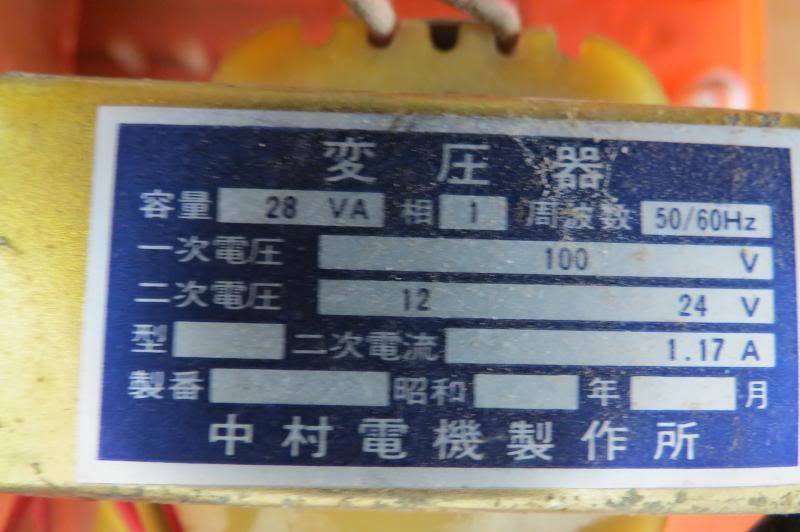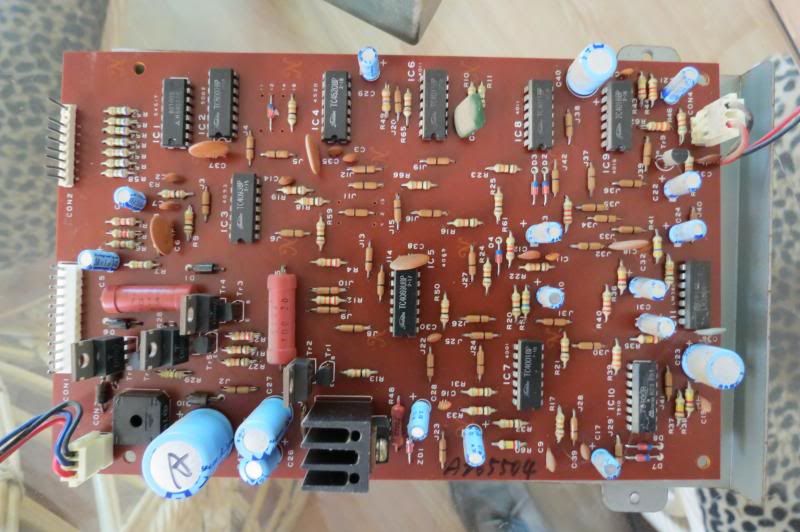
Originally Posted by
heima

Yes, the outputs on the ratings is 24 and 12, but what is the input rating? I do not know, I can't read the writing, My input is 121.1v AC
The outputs are within specs now? Meaning you are measuring and getting 24 volts, not 29 volts, and 12 volts, not 14 volts? No, exact is 30.02v AC and 15v AC
If that is the case, why did they change? What was connected/disconnected when you took the readings? No change, I just figured that they were in range at 29 and 14
Crucial to troubleshooting is the process of elimination. The more unknowns, the more possibilities of cause, the more time to troubleshoot. Be certain that things are "good".
The "blackbox" is the box having the circuit board inside. It looks a little greenish gray in the photos. I can see electrolytic capacitors through the vent holes.
Electrolytic capacitors of older electronics have a reputation of failing. The dilectric fluid inside leaches out over time lowering the performance of the capacitor, shorting the plates, or corroding the circuit board under the capacitor.
Most likely that circuit board has diodes and transistors. When subjected to over voltage or over current, these can fail.
I would believe the circuit board uses DC power to drive its logic circuits. That means AC has to be converted to DC somewhere. That could be on the circuit board, or with another component. The conversion circuit uses capacitors and diodes. If 29 volts was being applied to the conversion circuit, it might have shortened its life. 29 volts is 21% more than 24 volts. I don't see anything that would change the voltage from AC to DC?
I am not familiar with this type of pachinko, but this is what I would do if it was my machine.
Pachinko unplugged from wall.
1. Digital MultiMeter (DMM) set to Ohms, measure resistance through each connector.
2. DMM set to Ohms,measure resistance through each switch.
3. DMM set to Ohms, measure resistance through each fuse.
Pachinko plugged into wall, powered on.
4. DMM set to AC volts, measure voltage on every terminal of every transformer.
5. DMM set to AC volts, measure voltage through wires and connectors from transformers.
Follow where AC voltage wires go for AC to DC conversion.
6. DMM set to DC volts, measure voltage at AC to DC conversion device.
7. DMM set to DC volts, measure voltage through wires and connectors from conversion device.
If everything is fine so far, unplug pachinko from wall. Disconnect wires from box. Remove box from pachinko. Open box and remove circuit board.
8. Inspect circuit board for hot spots, burn marks, discolorations, stains, corrosion, anything that looks odd. None found
9. Inspect the electrolytic capacitors (typically light-blue, light-grey, or black, cylinders) for an "inflated", "blown up", or "expanded" appearance. Is there a stain under the capacitor? Is the black plug showing? None found
10. DMM set to diode check, check the diodes (black or glass cylinders lying on side), probes one way should beep and show 0.5 to 0.7, probes the other way should not beep and show nothing or 0. Diode check? What setting?
11. DMM set to diode check, check the transistors (black or silver, with three wires), transistors can be checked like two diodes together. There are six combinations of how the probes can be attached. You should get the beep and about 0.7 for only two of the ways.
If you have diagnosed that the problem is in the box, but you don't feel comfortable pursuing the troubleshooting any further, there are many people here who do restorations and they might be willing to take a look at your circuit board for a nominal fee.









 Reply With Quote
Reply With Quote 幸運わんわん Luckydog or Yukiwanwan in Japanese
幸運わんわん Luckydog or Yukiwanwan in Japanese 







 #UKPachinko
#UKPachinko



